Тексти для аудіювання з англійської мови
Завдяки запропонованому комплексу вправ учні удосконалюють навички аудіювання. Запропоновані тексти містять завдання, спрямовані на засвоєння лексичного та граматичного матеріалів по темі,розширення пасивного словника, а також здогадки про значення нових слів за контекстом, розвивають фонетичнийта інтонаційний слух, інтелектуальні та пізнавальні здібності, стимулюють розумову та мовленнєву діяльність учнів,виховують в учнів культуру спілкування, прийняту в сучасному цивілізованому світі, та інтерес до країни, мова якої вивчається.
1. Text for listening
NATIONAL CUISINE
«British food» has become a laughing stock and it's not fair! It doesn't deserve its terrible reputation.
In the sixteenth century, the banquets of the English kings and queens were known as the most exciting in Europe. The English were renowned for their roasts, pies, soups and puddings. British roast beef is still famous, it's often eaten with Yorkshire pudding — a sort of little crusty bun that soaks up the gravy. Other traditional meals are roast lamb, eaten with mint sauce; roast pork with apple sauce; iamb with plums or apricots; smoked salmon — light pink fish served just with a slice of lemon and some pepper; and shepherd's pie — basically minced meat with a layer of mashed potato on top. British cheeses were — and still are — some of the best in the world: Cheddar, Wensleydale, Double Gloucester, Stilton and Red Leicester are all delicious. British sweet puddings, tarts, pies, trifles and cakes were at one time considered supreme. Who could want more, for example, than a sherry trifle made with fruit, sponge cake, jelly, custard and cream?
So what's gone wrong? Well, during the Second World War there was a shortage offood so people got used to poor-quality meat or fish or cheese. As a result, the British diet though still healthy — became very plain. Later, in 1960s, people went mad for the most exotic food they could find.
However, things are changing. The British are also interested again in their own traditional recipes. More and more restaurants are opening in Britain which specialise in the country's own cooking. This is a revolution and it means a great national heritage is being rescued.
1. Listen to the text. Match choices (1—6) to (A—F).
|
|
2. Arrange the replies in the dialogue in the correct order.
- Could 1 have a slice of pumpkin pie?
- Are you ready to order?
- Good morning. Can I see the menu, please?
- Yes, I am, thank you. I'll have three scrambled eggs with country ham, toast and jam, please,
- Would you like anything to drink?
- Here you are, sir.
- Thanks.
- Anything else?
- Sure, Coming right up.
- I'll have a tomato juice and some iced tea.
3. Listen to the text. Match choices (1—6) to (A—F).
|
|
.
4. Arrange the replies in the dialogue in the correct order.
- Are you ready to order, sir?
- I'm afraid the trout is off.
- Sure, sir.
- Yes. I'll have the beef stew for starters and my wife would like
tomato soup.
- Oh dear. Err... Just give me a small mixed salad then.
- One beef stew and one tomato soup. What would you like for the
main course?
- Yes, please. May I have a glass of orange juice, please?
— I'll have the Cayenne Pepper Steak and my wife would like the Fried
Trout with mashed potatoes.
2. Text for listening
ARE WE WHAT WE EAT?
When I was at school, our teacher said to the class, «You are what you eat». My friends and I would laugh and call each other «hamburger» and «biscuits». Our teacher was trying to show us the importance of eating the right food to stay healthy.
So can you tell what your friends eat just by looking at them? When you know the effects of different types of food, you can use your knowledge well and eat what you want to become.
Food has an impact on our physical and emotional health. Have you ever heard any of the following advice?
Lettuce or milk can make you sleepy.
To stop feeling sleepy you should eat peanuts or dried fish.
To keep your teeth dean you should eat apples often.
Garlic helps you not to catch a cold.
Everyone has their own advice to give, which they have read about or have been told by older relatives. Some of these pieces of advice seem to contradict each other,
Eating chocolate makes you fat and gives you spots.
Chocolate contains the essential minerals iron and magnesium.
What we need to figure out is what type of chocolate to eat to get the benefits and how much of it to eat. We can do this by reading the list of ingredients on the chocolate bar wrapper, exactly how much real chocolate is in there? And how much of that do we need to eat to get the benefits of the minerals it contains?
Future restaurants might be named after the physical or emotional state they hope to create. Their menus will list the benefits of each dish and drink. Some restaurants have already started this concept, and list the nutritional content of their dishes on the menus.
1. Listen to the text. Mark the following statements (1—6) true (T) or false (F).
- Food may influence people's physical and emotional health. T /
- Lettuce can make you sleepy. __________
- To stop feeling sleepy you should drink some milk. __________
- Potatoes help you not to catch a cold. ____________
- Eating chocolate can't be harmful for one's health. ___________
- It's a good idea to read the list of ingredients on the wrappers.______________
2. Listen to the text. Mark the following statements (1—6) true (T) or false (F).
- Food is not connected with people's physical and emotional health.
- Milk can make you sleepy. _______
- To keep your teeth dean you should eat chocolate often. __________
- Garlic helps you not to catch a cold. ________
- Eating chocolate can make you fat or give you spots.
- All toe restaurants have already started listing the nutritional content of their dishes on the menus.
3.Text for listening
7 RIDICULOUSLY UNIQUE DINING EXPERIENCES
- In 2005, Dorothy Moore opened The Dining Dog Caf? in Edmonds, USA, a pet-friendly restaurant for dogs and their owners. If is one of the few restaurants in the US which accommodates pets as well as their pet-loving owners. The menu includes Doggie Cocktails, Appetizers and Dessert Tray.
- If you are under stress and need an alternative punch bag, you can visit Rising Sun Anger Release Bar in Nanjing, China. This is a place where customers can release their anger caused by stress and problems in their daily life. They are allowed to throw and smash the plates and glasses and even hit the waiters who have been given special training for the job.
- Duvet, a restaurant in New York City, USA features 30 customized, designer dining beds as the «seats» with tables, catered for extra comfort. Customers are also offered to wear customized bedroom slippers when they enter the restaurant.
- For those who would like to experience dining in total darkness, you can visit Nocti Vagus Dark Restaurant in Berlin, Germany. The well-trained waiters who will serve you are blind. Customers will be entertained with special cultural programmes which are presented in total darkness as well.
- If you like fo experience rude service (maybe once a while), you can go to Dick’s Last Resort,, in Chicago, USA. This is the place where you can not only enjoy a wide range of choices on the menu, but also have lots of fun from watching the waiters who will inflict rude jokes and humour upon the customers (including you).
- The Jail is a prison-themed restaurant in Taiwan. The layout is just like any other prison with sliding iron bars and metallic aluminium floors with waitresses dressed as wardens. Customers will be given the option to be handcuffed and taken to their own prison cel! with a dining table and -, comfortable seats. This is where they can enjoy good food and soothing music.
- Aurum is a newly opened hospital-themed restaurant in Clark Quay, Singapore. The lightings remind you of the ones in the operating theatre. Customers sit on golden wheelchairs and the meals are served on the operating tables. The cutleries used for the meal include syringes.
1. Listen to the text: choose the caf?/restaurant names from the list and write them under the correct pictures. Listen again and write the names of the countries these caf?s/restaurants are located in.
The Dining Dog Caf?
Rising Sun Anger Release Bar
Duvet
Nocti Vagus Dark Restaurant
Dick's Last Resort
jail
![]()
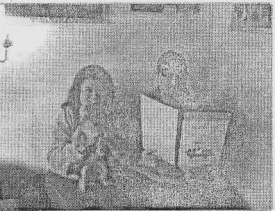
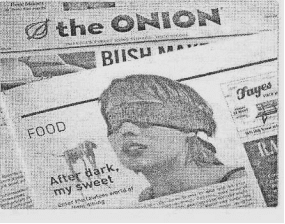


Aurum
2. Listen to the text; choose the caf?/restaurant names from the list and write them under the correct pictures, Listen again and write the names of the countries these caf?s/restaurants are located in,
The Dining Dog Caf?
Rising Sun Anger Release Bar
Duvet
Nocti Vagus Dark Restaurant
Dick's Last Resort
jail
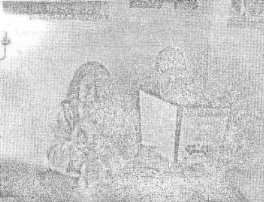
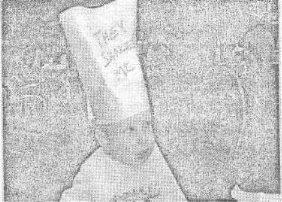

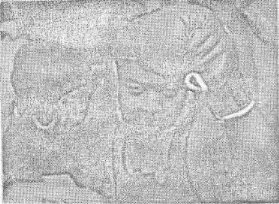
Aurum
4. Text for listening
Jean: So, here we are. Where shall we sit? Look! There are some vacant seats in the corner. What do you think?
Jill: The seats by the window are better. It'll be cooler there.
Jean: Okay. What would you like to eat?
Jill: I'm really hungry. I think I'll have chicken and chips with baked beans. Why don't you have chicken too?
Jean: I don't eat meat. It makes me ill. I'll have a cheese sandwich instead.
Jill: And what about drinks? I think I'll have some mint tea.
Jean: No, that's really expensive! It's three dollars sixty cents! I'll have a coffee; it's much cheaper.
Waiter: Good evening.
Jill: Good evening. We'll have one chicken and chips with baked beans and one cheese sandwich please.
Waiter: No problem! What would you like to drink?
Jean: A mint tea and a coffee please. Oh — and please bring me some cream for the coffee. Waiter; Okay. Let me repeat your order. One chicken and chips with beans, one cheese sandwich, a mint tea and a coffee with cream.
1. Listen to the dialogue and mark the following statements as true or false
True 1) The dialogue takes place in a caf?.
________ 2) Jill prefers a table by the window as it's cooler there.
_________ 3) Jill is very hungry.
_________ 4) Jean doesn't eat meat as she is afraid of getting fat.
_________ 5) Jill wants her chicken with beans and potatoes.
_________ 6) Jean and Jill choose the same drink.
_________ 7) Coffee is much more expensive than tea in that caf?.
_________ 8) Jean prefers black coffee.
2. Listen to the dialogue and mark the following statements as true or false
__False___ 1) The dialogue takes place at a party,
__________2) Jill prefers seats in the corner to those by the window.
__________ 3) Jill is not really hungry.
__________4) Jean is on a diet.
__________5) Jill is a vegetarian.
__________6) Jean prefers cheese to meat.
__________7) Mint tea costs more than three dollars.
____________8) Jean wants white coffee.
5. Text for listening
FOOD AROUND THE WORLD
New Year Traditions
In China, during New Year celebration people eat eight, ten or twelve dishes of food. This is because an even number means doubling the luck. A lot of the food at New Year has special meaning. Seaweed means good luck and long noodles mean a long life. They eat whole vegetables and don’t use knives to cut things, because this means the end of your good luck.
“ In Russia, there is lots of food on the table so the next year will be happy and plentiful. At 11.59 people open champagne and wait for the clock to strike twelve. Then they make a toast for the New Year. They wish everybody good luck and happiness.
In Spain, people eat twelve grapes — one with each chime of the clock at midnight. This brings good luck for the next twelve months. But it is difficult to eat twelve grapes in twelve seconds, so people usually have a mouth lull of grapes at the end!
Wedding Traditions
Italians eat doughnuts in the shape of bowties for good luck. They also eat sugared almonds when they hope for a baby.
Many years ago in Britain the father of the bride gave the groom «honey mead» (a honey drink) for a whole month. In this way the couple had a month of sweetness and happiness. We have now changed the word to «honeymoon» — the holiday a couple goes on after their wedding.
Birthdays
When a child is born in China, the father gives red eggs to his friends and family — an even number for a girl and an odd number for a boy.
The birthday party started in Europe in the Middle Ages. People were afraid of ghosts and bad spirits on their birthdays. Friends and family came to visit you with presents to stop them.
|
Food Traditions |
New Year |
Wedding |
Birthday |
|||
|
China |
Spain |
Italy |
England |
China |
Mexico |
|
|
1) People believe that eating twelve grapes brings good luck for the next twelve months. |
|
|
|
|
|
|
|
2) The father gives red eggs to his friends and family. |
|
|
|
|
|
|
|
3) People believe an even number means doubling the luck. |
|
|
|
|
|
|
|
4) People eat sugared almonds when they hope for a baby. |
|
|
|
|
|
|
|
5) People eat whole vegetables and don't use knives in order not to scare away good luck. |
|
|
|
|
|
|
In Mexico people fill a paper animal with sweets. Children dose their eyes an a hit the animal until the sweets fall out. Then everybody eats the sweets.
1. Listen to the text and tick (S) the correct column.
|
Food Tradition
|
New Year |
Wedding |
Birthday |
|||
|
China |
Russia |
England |
Italy |
Europe |
Mexico |
|
|
1) Long ago the father of the bride gave the groom a honey drink. |
|
|
|
|
|
|
|
2) People believe that seaweed means good luck and long noodles mean a long life. |
|
|
|
|
|
|
|
3) People eat doughnuts in the shape of bowties. |
|
|
|
|
|
|
|
4) At 11.59 people open champagne and wait for the clock to strike twelve. |
|
|
|
|
|
|
|
5) People fill a paper animal with sweets. |
|
|
|
|
|
|
2. Listen to the text and tick (S) the correct column.
6. Text for listening
- What are you doing, Dolly
- I'm tidying my room, Mum.
- Have you watered the flowers already?
- I thought you did it yesterday.
- Dolly, it's your duty to water the flowers. Please, remember about it.
- OK, Mum. 1 will do it now. And where is my blue dress?
- Oh, I haven't ironed it yet. I'm busy with polishing the furniture. But if you need this dress, you can iron it yourself.
- Good idea. Will you go shopping, Mum? I need some fruit for my cake.
- Are you going to bake a cake, dear?
- Yes, Mum. Kate is going to visit me in the evening and I want to prepare a surprise for her. You know, she is crazy about cakes and pies.
- Well, I am going shopping in the afternoon and I'll buy some fruit of course. Do you need anything else, dear?
- Will you buy some ice cream for me, please? Some chocolate or fruit ice cream?
- I know that you like ice cream, but... Good, I’ll do it. And now finish cleaning up. We still have a lot of work to do.
1. Listen to the dialogue and decide if these statements are true or false
- Dolly is tidying her room. ________
- Mother’s duty is to water the flowers._________
- Mother is busy with ironing,____________
- Dolly is busy with polishing the furniture_____________
- Mother and Dolly are going shopping________________
- Dolly is going to bake a cake._____________________
- Kate likes cakes and pies._________________
- Mother Sikes ice cream. _______________
7. Text for listening
To make a cake isn't hard. First, mix a glass of sugar with one egg. Second, add one glass of milk, some soda and some cocoa and mix it once again. Then add one glass of flour and mix until smooth. Heat the oven. Pour the dough into the form and bake it. Cut the cake into two halves and spread them with jam. Decorate the cake with some fresh fruit.
1. Put the sentences into the correct order.
Put one glass of milk, some soda and some cocoa and mix it.
Pour the dough into the form.
Cut the cake into two halves.
Mix one glass of sugar and one egg.
Decorate the cake with fresh fruit.
Heat the oven.
Spread the cake with jam.
Put one glass of flour and mix it.
Bake the cake.
8. Text for listening
- What are you doing, Paul?
- I am making some sandwiches for breakfast.
- Have you emptied the wastebin already?
- Mum, I thought Dad did It yesterday.
- Paul, have you forgotten that it's your duty?
- OK, I’ll do it now. Mum, have you washed my green T-shirt?
- Sorry, Paul, I haven't done the laundry yet. I'm busy with sweeping the floor. But I am going to do the laundry in the afternoon.
- Mum, will we visit Granny today?
- Of course, we will. Paul, dear, will you go shopping for me? 1 promised to buy some food for
Granny.
- OK, Mum. What shall I buy?
- We need some milk and butter and I think we should buy some biscuits and some fruit for Granny. You know, she loves oranges and grapes.
- Can I buy any sweets for me, please?
- Well, I don't mind. But, dear, hurry up. We can't miss the bus.
1. Listen to the dialogue and decide if these statements are true or false
- Paul is busy with preparing breakfast. ______________
- Dad doesn't have to empty the waste in.___________
- Mother is busy with laundry now.___________
- Mother and Paul are going to visit Paul's Granny tomorrow. ___________
- Mother is going to buy some milk for Granny,__________
- Granny likes fruit, ________
- Mother and Paul will go to Granny's by bus,________
- Mother promised to buy some ice cream for Paul.________
9. Text for listening
To make an apple pie isn't very hard. First, mix three eggs and one glass of sugar. Then add some soda and some flour. Mix It again until smooth. After that peel some apples and slice them. Heat the oven. Hut the apples into the form and pour the dough into it. Bake the cake. Decorate the pie with some jam fruit.
1. Put the sentences into the correct order.
Heat the oven.
Put some soda and some flour.
Decorate the pie with jam fruit.
Put the apples into the form.
Bake the pie.
Mix the dough until smooth.
Mix one glass of sugar and three eggs.
Pour the dough into the form.
Peel and slice some apples.
10. Text for listening
Look at the screen and watch a video about cooking a famous Ukrainian dish. It is borsch. This recipe is not going to have any lam or beef, it is vegan and absolutely delicious. Then you will have to put the sentences in the correct order.
1 Add 2 tablespoons of minced fresh dill.
2 Add chopped celery and carrot.
3 Add 2 cloves of chopped garlic.
4 Pour 1 or 2 tablespoons of oil into the pan.
5 Stir and leave for 5 or 7 min.
6 Add one medium chopped onion.
7 Serve with 1 tablespoon of sour cream
8 Add 3 cups of vegetable stock
9 Peel and cut into cubes three medium beets.
10. Add beets, potatoes and Macintosh apple, combine everything.
11. Text for listening
Listen to the dialogue between the interviewer and George.
Be attentive and then we will do the task ( true or false). If the sentence is false, please, explain why.
- George, why did you decide to open a restaurant in Argentina?
- I’d always wanted to have my own restaurant and it would have been very expensive to do that in England.
- What kind of food do you serve?
- Mainly international dishes like pasta. Steak and fries, risotto – but we also do several English dishes as well.
- Were Argentinian people surprised when they heard that an English chef was going to open a restaurant here?
- Yes, they were – very! I think people do not usually expect the English to be good cooks.
- Is your chef English?
- No, he is Argentinian – but I have taught him to make some English dishes.
- What kind of English dishes do you have on your menu?
- Well, we are open in the morning, and we serve traditional English breakfast, and then we have a lot of English desserts at lunchtime, for example, trifle – that is typical English dessert made with fruit and cake and cream. And we do proper English teas in the afternoon – tea with cakes and sandwiches.
- Are the English dishes popular?
- Yes, especially the desserts and cakes. I think people here in Argentina have a very sweet tooth.
- And finally is there any English food that you really miss here?
- The thing I miss most living in Argentina is English cheese. I really miss Stilton – which is a wonderful English blue cheese. It is not as famous as some of the French cheese like Roquefort but I think it should be. You should try it.
- I will try! Thank you for the interview.
- Welcome to the restaurant!
1. True or false.
1 George opened up a restaurant in Canada.
2 They mainly serve international dishes.
3 George thinks everybody knows the English to be excellent cooks.
4 The chef of the restaurant is Argentinian.
5 They have traditional English breakfast and typical English desserts on the menu.
6 English dishes are not much popular in Argentina.
7 George misses a wonderful French cheese – Roquefort.
8 Stilton is English blue cheese.
12. From the history of potato
1. Listen to the story and tick the sentences T or F
In the ancient ruins of Peru and Chile, archaeologists have found potato remains that date back to 500 B.C. The Incas grew and ate them and also worshipped them. They even buried potatoes with their dead, they stashed potatoes in concealed bins for use in case of war or famine, they dried them, and carried them on long journeys to eat on the way (dried or soaked in stew). Ancient Inca potatoes had dark purplish skins and yellow flesh. The Incas called the potato "papas," as they do today. Following is the Inca prayer that historians say they used to worship them. The potato was carried on to Italy and England about 1585, to Belgium and Germany by 1587, to Austria about 1588, and to France around 1600. Wherever the potato was introduced, it was considered weird, poisonous, and downright evil. In France and elsewhere, the potato was accused of causing not only leprosy, but also syphilis, narcosis, scronfula, early death, sterillity, and rampant sexuality, and of destroying the soil where it grew. Most Americans considered the potato as food for animals rather than for humans. As late as the middle of the 19th Century, the Farmer's Manual recommended that potatoes "be grown near the hog pens as a convenience towards feeding the hogs." Today, the potato is so common and plentiful in the Western diet that it is taken for granted. We seem to forget that the potato has only been with us for a few hundred years.
- The archeologists have found potato remains in the ancient ruins of Peru and Chile.
- The Incas worshipped potatoes but they didn’t eat them.
- Ancient Inca potatoes had dark purplish skins and yellow flesh.
- In the 17th century the people of many European countries such as Italy, England, Belgium, Germany, Austria, France saw potatoes for the first time.
- Much time has passed since people started to like eating potatoes.
- Today, the potato is so common and plentiful in the Western diet that it is taken for granted.
13. The Pechena Kartoplia
1. Say why “The Pechena Kartoplia” restaurant is popular with visitors.
The bread and potatoes have been the main national dishes of all Slavonic people for centuries.
The speciality of the Pechena Kartoplia, the delicious baked potato, is cooked before customers’ eyes. The smoking potato is taken out of the oven.Then it is cut in halves. Butter and cheese are added and the potato is mashed into appetizing soft puree. Then the filling is put inside. It is of the customer’s choise- herring, pickled or fried mushrooms, crab meat, brynza, ham, cabbage, etc. But the menu doesn’t limit itself to potatoes; there is also a great selections of salads, hot sandwiches (toasts) with ham, fried mushrooms and cheese, varenyky (Ukrainian ravioli with cherry, meat, potato and mushrooms), hot fragrant soups, mouth-watering desserts (delicious pies, fruit with souffl? and fruit jelly) and various drinks (from ice-cold refreshing drinks to hot chocolate and coffee).
Lively and bright interiors, in which green, yellow and red colours dominate, create a pleasant atmosphere and festive mood.
14. Texts for listening
- Hello. Here is the menu. What will you order?
- A cup of green tea with lemon and a toast with raspberry jam.
***
- What are you doing, Nelly?
- I’m going to cook an apple pie.
- Cool! Do you have everything for it?
- I’m afraid, I haven’t apples.
- Look. They are over there, in the basket
***
- I want to cook pizza but I think I haven’t something.
- Let’s see. There is some cheese, mayonnaise, sausage.
- But there isn’t pizza base and mushrooms.
1. Listen to short conversations and put a tick “√” near the right answer.
1) What drink did he order?
a. black tea with lemon;
b. black tea with milk;
c. green tea with lemon.
2) Where were the apples?
a. in the fridge;
b. in the basket;
c. there were no apples in the house.
3) What wasn’t in the fridge?
a. pizza base and mushrooms;
b. pizza base and cheese;
c. sausage and mushrooms.
16. Text “The Picnic”
This weekend my cousins are staying with us, because today we are going for a picnic at our favourite picnic place.
My mother is a good cook. She is packing everyone’s favourite food in a big box. There are other boxes and bags, too: picnic things, swimming things, towels, knifes, cups, glasses, drinks, sunshades, mats and a big box full of rubbish. I threw the box into the rubbish bin in the street and we put everything else in the car.
In an hour we saw the river. It was beautiful and full of clean water from the mountains. There were a lot of places for swimming there. We jumped from the rocks into the cool water and were happy.
Soon everyone was hungry. We unpacked the car but the food wasn’t there! Instead of it there was a big box of rubbish, but no food, except for some bread and biscuits. Everyone looked at me. I said, “I think the food box is in the rubbish bin now. Sorry.” So, we had nothing else to do but eat biscuits.
1. Listen to the text and put “+” next to the true sentence and “-” next to the false one.
- This weekend my aunt is staying with us.
- Today we are going for the picnic.
- My dad was packing everyone’s favourite food in a big box.
- I threw the box into the big rubbish bin in the street.
- In an hour we saw the river.
- Betty jumped from the rock and broke her leg.
- When everyone was hungry, we had a wonderful dinner.
- Which of the answers to the questions are correct: a, b or c?
1. Why are my cousins staying with us?
- We were going for a picnic.
- They came for holidays.
- The weather was bad.
2. Who were packing food?
- Mum did.
- I did.
- My cousin did.
3. Where did I throw the box?
- Into the car.
- Into the rubbish bin.
- Into the kitchen.
4. What was the river like?
- It was dirty.
- It was hot.
- It was beautiful.
5. What were we doing?
- Speaking on the bank.
- Cooking barbecue.
- Jumping from the rocks.
6. Where was the box of food?
- In the car.
- In the rubbish bin.
- On the river bank.
7. What did we have to eat?
- the biscuits.
- The barbecue.
- Everyone’s favourite food.
3. Write the sentences in the correct order to get a story.
- In an hour we saw the river.
- We are going for a picnic.
- I threw the box into the big rubbish bin.
- We had nothing else to do but to eat biscuits.
- We jumped from the rocks and were very happy.
- My mum packed everyone’s favourite food in a big box.
- We saw a big box of rubbish but no food.
16. The secret ice cream
Ancient manuscripts tell that the Greek commander Alexander Makedonsky used to have different fruits arid juices mixed with ice and snow for dessert.
In Russia for holidays people used to put a dish with frozen little pieces of sweet milk next to the dish with pancakes. In old times in some countries the recipes of cold dainties were kept in secret, for their divulgence the court cooks could be sentenced to death. Besides, it wasn't easy to cook ice cream, especially in summer. Ice and snow were delivered to Alexander Makedonsky's palace from the mountains. Later people began to sell ice. The ships with huge blocks of ice would hurry to the shores of the hot countries. That lasted till the first ice-making machines appeared. They were called refrigerators. That happened about one hundred years ago. Now ice cream is sold everywhere and of any kinds: fruit and berry, milk and chocolate. And it is available to everybody.
By the way, if you have a sweet tooth you can make ice cream yourself. It's quite easy for those who can cook. The recipe is not a secret: eggs, sugar, milk, sour cream are mixed together, boiled for one or two minutes, cooled and frozen in the refrigerator. Add some nuts-or jam and enjoy this delicious product.
1. Say if the sentence is true /false:
- The Greek commander Alexander Makedonsky used to have fruits and juices mixed with ice and snow for dessert.
- Russian people usually ate frozen pieces of sweet juice with pan- cakes for holidays.
- In old times the cook who had told somebody the recipe of ice cream could be sentenced to death.
- Ice and snow were made at the court of Makedonsky, there were no problems with it
- People used to sell ice.
- The ships with huge blocks of ice would bring ice from the shores of the hot countries.
2. Fill in the words
- In old times in some countries … of cold dainties were kept in secret.
- Besides, it wasn't easy to cook ice cream, especially in ….
- The ships with huge blocks of ice would hurry to the shores of the ….
- That lasted till the first … machines appeared.
- Now ice cream is sold … and of any kinds.
- By the way, if you have a sweet tooth you can make … yourself.
3. Answer the questions
- Which of Greek commanders liked to have fruits and juices mixed with ice and snow for dessert?
- Was there a kind of ice cream in Russia in old times?
- What was it like?
- Were the recipes of ice cream available to everybody?
- Where did the cooks of Alexander Makedonsky get ice and snow for ice cream?
- How were the blocks of ice carried to hot countries?
4. Write the recipe of the ice cream
17. American Meals
Americans do not like to prepare meals at home. They prefer to eat at cafes or restaurants. Usually they have three meals a day: breakfast, lunch and dinner. American breakfast as a rule consists of butter, jam, bread or a roll. Usually people also eat cereal with milk, some cheese, soft-boiled eggs and drink orange juice, tea or coffee. Most of Americans do not come back home to lunch, they have it at Fast Food Restaurants. The most common menu consists of apple-pie, hamburger, cheeseburger, sandwiches. There are a lot of "fast food" shops to buy something to eat quickly. They are situated on many street corners. These sell hamburgers, hot dogs and drinks like Coca-Cola. For dinner they have meat, fried or baked potatoes with ketchup, corn, peas and macaroni. In general many drinks are drunk with ice, even tea.
1. Finish the sentences:
- Americans_______.
- Usually they have_______.
- The menu consists of______.
- The "fast food" shops________.
- These sell______.
- The main meal of______.
- For dinner they have_______.
- In general many drinks are_____.
2. Answer the questions
- Do you eat at regular hours?
- Do you take much sugar in tea and coffee?
- How many sweets do you eat per week?
- How often do you drink fizzy drinks, like Cola, Fanta or Sprite?
- How often do you eat fresh fruit?
- What do you eat during the breaks?
- Is most of the fresh food you eat steamed boiled or fried?
- Do you eat fatty, spicy and salty food?
18. All About Potatoes
A lot of potatoes are eaten in many parts of the world, particularly in Northern Europe and North America. The potato had been cultivated in America before it became important food in Europe, Africa and Asia. It was introduced to England in the time of Queen Elizabeth I in the
16th century. Nowadays it is such an important part of the English man's diet that it is difficult to imagine how he used to manage without it.
Potatoes can be cooked in many different ways. The four main methods used in England are boiling, roasting, baking and frying. When potatoes are boiled, they are cut up and put in a saucepan with water and a little salt. When potatoes are baked, they are put in an oven for half an hour. They usually are not peeled. Baked potatoes with their skins on are called "potatoes in their jackets". Roasting is like baking because it is usually done in an oven. The main difference between baking and roasting is in the usage of fat. Fat is used while you are roasting, but it is not while you are baking. Frying is like roasting because fat or oil is used. There are two main ways of frying potatoes. They can be cut into slices and fried in a special shallow pan called frying pan. For this way of frying English people use animal or vegetable fat which is sold in packets or tins. The other way is called deep frying. The slices of potatoes are put into a deep pan or metal box full of oil.
In Britain fried potatoes are called "chips". We must be careful not to get confused about the meaning of the word "chips". In America fried potatoes are mostly called "French fries" and the word "chips" is used in America and now also in Britain for potato crisps. Potato crisps are very thin slices of potato fried by a special factory method and sold in a plastic bag. It is this second and newer meaning of the word "chips", which has been borrowed by some other languages.
One of the most popular dishes in Britain is fish and chips. Before the fish is fried it is dipped in a mixture of flour and water called batter. Both fish and chips are deep fried. In every town in Britain there are fish and chips shops where one can go and buy chips and fish for the whole family.
1. Answer the questions
- In what ways can potatoes be cooked?
- How do you bake potatoes?
- What potatoes are called "potatoes in their jackets"?
- Why is roasting similar to baking?
- How many ways of frying do you know? What are they?
2. Match the correct answer in B to the question in A.
|
A |
B |
|
1. Are potatoes eaten in your country? |
a) Baked potatoes with their jackets on. |
|
2. Do you know what is called batter? |
b) In the century. |
|
3. When was it introduced to England? |
c) Yes, they are. It’s an important part of Ukrainian diet. |
|
4. Had the potato been first grown in England? |
d) No, it had not. The potato was first grown in America before it became world-spread. |
|
5. What potatoes are called “potatoes in their jackets”& |
e) Yes, of course. It’s a mixture of flour and water. |
.
3. Write questions to the sentences.
- A lot of potatoes are eaten in Europe and North America.
What______?
- The potato was introduced to England in the time of Queen Elizabeth I.
When______?
- Four main methods of cooking potatoes are used in England.
How many_____?
- The second meaning of the word "chips" is newer, that is why it has been borrowed by some other languages.
Why______?
- Fish and chips are taken home wrapped in a greaseproof paper. How ______?
19. Sandwich
The Earl of Sandwich was an Englishman.He lived in the 18 th centery. He was
Fond of playing cards so much that people knew him the greatest player in London. He played cards during the day and even didn`t stop his games at night.
He remained at the table for 24 hours a day and even didn`t stop for meals.His ser-
vant usually brought him some slices of meat and bread. So he was able to continue playing while eating.
It happened that the Earl of Sandwich put the meat between the bread and in this way invented the new dish.People began to call it “ a sandwich” after this man.
1. Say if the sentence is true /false:
1. The Earl of Sandwich was a Frenchman.
2. He was fond of playing cards.
3. People knew him the greatest sportsman in London.
4. The Earl of Sandwich could play cards for 24 hours a day.
5. The famous player stopped playing only for meals.
6. People called a new dish after the Earl of Sandwich.
20. Traditional Ukrainian dishes
Deruny is a traditional Ukrainian dish made of potatoes. Deruny are small potatoe
Pancakes fried in oil. We eat deruny with sour-cream.
Ukrainians prepare deruny filled with meat or cottage cheese, fried mushrooms.
They are very tasty!
You prepare deruny in this way: first you grate the potato, then you add eggs, flour, then fry the miхture in the pan. They are very tasty with butter, sour-cream and when they are hot.
Another favourite Ukrainian dish is borsch. It is made of potatoes, beets, cabbage,
Meat and tomato source.
Ukrainians like varenyky very much. Varenyky can be filled with cheese, potatoes, cabbage, meat. So, Ukrainian cuisine is rich and tasty.
1. Say if the sentence is true /false:
- Deruny is a traditional English food.
- Deruny are small fruit pancakes.
- Deruny are very tasty with ice-cream.
- Borsch is a favourite Ukrainian dish.
- Ukrainians like varenyky very much.
21. Texts for listening
1. listen to the cutting dialogues. «In the restaurant». Make up a dialogue and try to guess what restaurant the dialogue is about.
Dialogue 1:
- Yes, certainly. What would you like?
- Waiter, could I order my sweet now? I am in a hurry.
- I think I’d like an apple pie and tea with milk.
- Very good, madam.
Key:
- Waiter, could I order my sweet now? I am in a hurry.
- Yes, certainly. What would you like?
- I think I’d like an apple pie and tea with milk.
- Very good, madam.
Dialogue 2:
- Yes, bring me it, please.
- I want to order cabbage soup, holubtsi and mash potatoes. Have you a kysil?
- What would you like?
- Yes, of course. Is it all?
Key:
- What would you like?
- I want to order cabbage soup, holubtsi and mash potatoes. Have you a kysil?
- Yes, of course. Is it all?
- Yes, bring me it, please.
Dialogue 3:
- And to follow?
- Yes, I’d like to take the sushi, please.
- Can I take your order, Sir?
- Ice-cream, please.
Key:
- Can I take your order, Sir?
- Yes, I’d like to take the sushi, please.
- And to follow?
- Ice-cream, please.
Dialogue 4:
- How about the sweet?
- Have you decided on something, sir?
- No sweet, thank you, just coca cola.
- Yes, fried chicken and salad for me, please.
Key:
- Have you decided on something, sir?
- Yes, fried chicken and salad for me, please.
- How about the sweet?
- No sweet, thank you, just coca cola.
22. Texts for listening
Lent
Lent is the period of forty days before Easter. For Christians it’s a time to give up something, for example, to stop eating sweets. Then at Easter, children in Britain eat lots of sweet things — especially chocolate Easter eggs! Lent begins on Wednesday, and many people eat something special on the day before ‘Shrove Tuesday’.
In Britain they eat pancakes.
Good morning. Today is Shrove Tuesday, so I’m going to talk about... yes, pancakes. This is my recipe. It’s very easy and very good.
You’ll need:
150 grams of flour; an egg;
300 ml of milk;
2 tablespoons of oil; a little oil for frying the pancakes; some sugar and two lemons.
That’s all. Now to make the pancakes...
Mix the flour and the egg with a fork. Slowly mix in the milk and the oil. Put a little oil in the pan. Heat the pan. It must be very hot. Pour in two tablespoons of mixture. Cook for about 45 seconds. Toss the pancake once. Cook for another 45 seconds. Serve with a little sugar and lots of lemon juice. That’s it. Have a nice Tuesday and enjoy your pancakes!
1. Listen to the radio programme and say what ingredients a pancake consists of.
2. Listen again and give instructions about cooking pancakes to a partner.
23. Texts for listening
Interviewer: George, why did you decide to open a restaurant in Argentina?
George: I’d always wanted to have my own restaurant and it would have been very expensive to do that in England.
Interviewer: What kind of food do you serve?
George: Mainly international dishes like pasta. Steak and fries, risotto — but we also do several English dishes as well.
Interviewer: Were Argentinian people surprised when they heard that an English chef was going to open a restaurant here?
George: Yes, they were — very! I think people don’t usually expect the English to be good cooks.
Interviewer: Is your chef English?
George: No, he’s Argentinian — but I’ve taught him to make some English dishes.
Interviewer: What kind of English dishes do you have on your menu?
George: Well, we’re open in the morning, and we serve traditional English breakfast, and then we have a lot of English desserts at lunchtime, for example, trifle—that’s typical English dessert made with fruit and cake and cream. And we do proper English teas in the afternoon —tea with cakes and sandwiches.
Interviewer: Are the English dishes popular?
George: Yes, especially the desserts and cakes. I think people here in Argentina have a very sweet tooth.
Interviewer: And finally is there any English food that you really miss here?
George: The thing I miss most living in Argentina is English cheese. I really miss Stilton — which is a wonderful English blue cheese. It’s not as famous as some of the French cheeses like Roquefort but I think it should be. You should try it!
Interviewer: I’ll try! Thank you for the interview.
George: Welcome to the restaurant!
1. Listen to the interview. Then read the statements and put T for the true statements and F for the false ones.
- George opened up a restaurant in Canada.
- They mainly serve international dishes.
- George thinks everybody knows the English to be excellent cooks.
- The chef of the restaurant is Argentinian.
- They have traditional English breakfasts and typical English desserts on the menu.
- English dishes are not much popular in Argentina.
- George misses a wonderful French cheese — Roquefort.
- Stilton is English blue cheese.
1


про публікацію авторської розробки
Додати розробку
